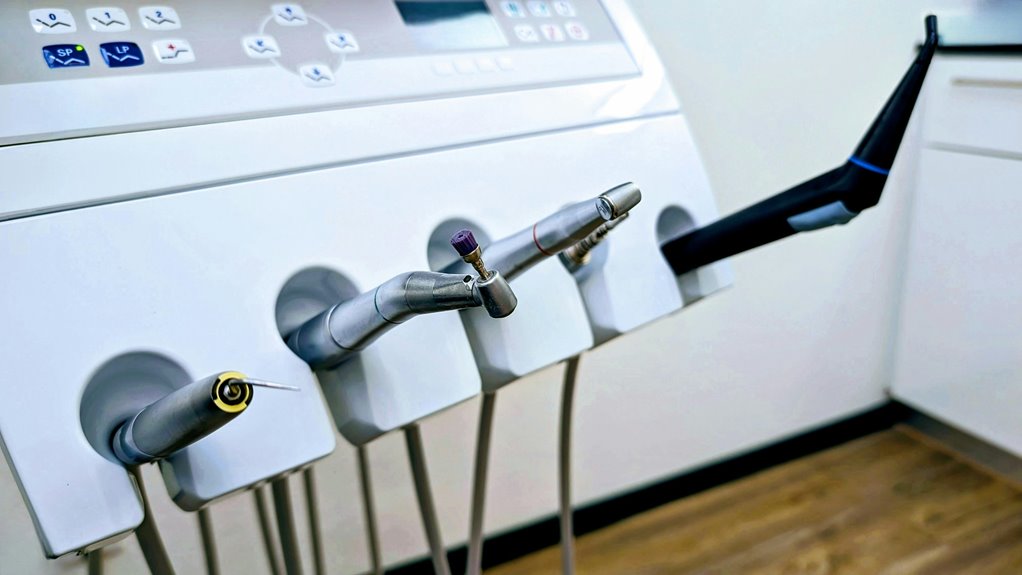If you're looking to protect your practice from potential liabilities, implementing specific strategies can make a significant difference. You might consider how extensive documentation and effective patient communication play vital roles in risk management. Furthermore, cultivating a culture of safety within your team can help identify issues before they escalate. But what are the key strategies that can truly lower your liability? The answer lies in an all-encompassing approach that addresses both legal and ethical standards, ensuring you're not just compliant, but also proactive in safeguarding your practice.
Key Takeaways
- Conduct thorough risk assessments and maintain safety checklists to proactively identify and mitigate potential hazards in the dental practice.
- Ensure comprehensive documentation of patient information, treatment plans, and informed consent to support actions and defend against claims.
- Foster effective patient communication by using clear language, encouraging questions, and providing emotional support to enhance patient understanding and trust.
- Implement ongoing staff training on legal compliance, ethical standards, and risk management to ensure competency and prevent liabilities.
- Promote interdisciplinary collaboration and clear communication among specialists to improve patient care and reduce the risk of misunderstandings or errors.
Risk Identification Techniques
Identifying risks in your dental practice is vital, especially if you want to guarantee patient safety and minimize liability.
Start with a thorough risk analysis by collecting and aggregating data about past incidents. This helps in hazard identification, revealing patterns that could indicate potential risks.
Encourage staff to report near-misses and provide training on recognizing these issues. Observing patient feedback and tracking complaints will give you valuable insights into recurring problems.
Regular facility inspections and equipment maintenance are important for identifying environmental hazards. Additionally, the significant increase in malpractice claims highlights the need for proactive risk management.
Stay updated with current guidelines and best practices through continual education to mitigate emerging risks.
With these techniques, you'll not only safeguard your practice but also enhance the overall patient experience.
Comprehensive Documentation Practices
Thorough documentation practices are the backbone of a successful dental practice, ensuring both patient safety and legal protection.
To maintain documentation accuracy, start by recording essential patient information, including their name, medical history, and prescribed medications. Conduct detailed clinical examinations, noting findings, treatment plans, and any diagnostic aids used. Accurate dental records are essential for ethical, personalized patient care, and they support ongoing patient treatment and continuity.
Always include informed consent, highlighting discussions about risks and benefits. Keeping a chronology of the patient's progress is vital, as it provides a clear record of all treatments and follow-ups.
Remember to uphold patient confidentiality throughout this process.
Effective Patient Communication
Effective Patient Communication
How can effective patient communication change your dental practice? It's essential for nurturing patient understanding and building trust.
Start by using clear, simple language to explain procedures. Avoid dental jargon and double-check that your patients truly grasp the information.
Active listening is key; maintain eye contact and show empathy by acknowledging their feelings. This emotional support can ease anxiety and create a more comfortable environment. Empathy in communication helps alleviate patient fears and fosters a more trusting relationship.
Consistent communication matters too—personalize messages and guarantee timely follow-ups. Encourage open dialogue so patients feel enabled to ask questions.
Collaborative Treatment Planning
Effective patient communication lays the groundwork for successful collaborative treatment planning. By engaging in collaborative decision making, you can enhance patient confidence as they see various practitioners working together for their benefit. Interdisciplinary teamwork guarantees that each specialist contributes their expertise, resulting in thorough care. This not only improves decision-making but also educates patients, giving them a clearer understanding of their treatment plans. Additionally, patient education fosters a deeper understanding of the treatment options available, empowering patients to take an active role in their care.
To overcome potential obstacles, focus on the practice's overall goals and maintain clear guidelines through written agreements. Encourage strong relationships among your team to cultivate trust and cooperation. Regular team-building activities can help address conflicts and promote a supportive environment. Ultimately, collaboration leads to better patient outcomes and lowers your liability as a dentist.
Ongoing Staff Training

Ongoing staff training is essential for maintaining high standards in your dental practice.
By implementing continuous education programs, conducting regular skill assessments, and providing compliance updates, you can guarantee your team stays sharp and informed. This proactive approach not only enhances patient care but also minimizes potential liabilities, creating a safer environment for everyone involved. Additionally, regular training on common legal pitfalls ensures that employees are aware of potential issues and can help prevent them from arising.
Continuous Education Programs
Investing in continuous education programs is essential for dental practices aiming to reduce liability and improve patient care. By establishing an extensive training program, you enable your staff through ongoing learning opportunities. Incorporate both in-office and off-site training to cater to diverse needs, ensuring staff members feel valued and engaged. Encourage their input on training topics; this not only boosts morale but also nurtures a culture of teamwork. Regular training evaluations help identify gaps and refine your training schedules, keeping the focus on practical application and evidence-based practices. Utilize role-playing to prepare your team for challenging patient interactions, enhancing their confidence and skills. Ultimately, a dedicated training culture strengthens your practice and mitigates potential liabilities.
Regular Skill Assessments
Continuous education programs lay the groundwork for a culture of improvement, and regular skill assessments build on that foundation.
By incorporating simulation exercises into your training regimen, you can provide staff with opportunities to practice real-life scenarios in a controlled environment. This method not only bolsters confidence but also sharpens technical and interpersonal skills essential for patient care. Valid and reliable assessments ensure that team members meet high competency standards, which is crucial for delivering safe and effective dental care.
Skill evaluation becomes vital here, as it guarantees that team members meet high competency standards. Regular assessments allow for customized scenarios to address specific challenges, such as difficult patient interactions or mastering new procedures.
Emphasizing ongoing training and evaluation not only enhances staff performance but also greatly reduces liability risks in your practice.
Compliance Updates and Training
As regulations in the dental field evolve, staying updated on compliance is essential for protecting your practice and ensuring patient safety.
Implementing ongoing staff training is a smart move. Utilize compliance technology to streamline your training processes, ensuring everyone understands OSHA and HIPAA guidelines. Compliance assessment tools can also help identify knowledge gaps among your staff.
Tailor your training programs with training customization to meet the specific needs of your clinic, enabling your team. Year-round training that combines in-office and off-site events will keep staff engaged and informed about the latest techniques.
Don't forget to include role-playing scenarios during meetings to enhance communication skills.
With these strategies, you'll cultivate a culture of compliance that strengthens your practice and builds trust with patients. Your commitment to training makes all the difference.
Regular Safety Inspections
Regular safety inspections are vital for maintaining a secure and efficient dental practice, especially since they help identify potential hazards before they lead to incidents.
By implementing regular safety checklists, you can guarantee that all equipment—from X-ray machines to emergency drug kits—is properly maintained and compliant with safety standards.
Set a consistent inspection frequency to keep track of significant items like fire extinguishers, smoke detectors, and emergency lighting.
Document preparation, including accident recordkeeping and safety plans, plays an essential role in evaluating risks. OSHA inspections involve workspace walk-through and document review to ensure compliance with safety regulations.
Regularly training your staff on these protocols guarantees everyone understands their responsibilities, helping to mitigate dangers.
Prioritizing these inspections not only boosts safety but also lowers your liability, creating a better environment for both your team and patients.
Incident Reporting Protocols

Effective incident reporting protocols are vital for minimizing liability and enhancing patient safety in your dental practice. Start by gathering detailed information about the incident, including who was involved, what happened, when and where it occurred, and how it unfolded. This clear documentation lays the foundation for incident analysis.
Next, complete the report with relevant patient details, the procedure performed, medications used, and any interventions taken. Additionally, ensure that reports capture adverse patient incidents as part of the comprehensive information.
After that, submit the report to your supervisor, ensuring it meets reporting guidelines and is stored securely for future reference. Compliance with state mandates, HIPAA, and OSHA regulations is essential, so file your reports timely and accurately.
This proactive approach not only protects your practice but also encourages a culture of safety.
Informed Consent Processes
When it comes to informed consent, clear communication is essential. You need to guarantee that patients fully understand the treatment options, risks, and benefits before making a decision. Thorough documentation practices won't only protect you legally but also reinforce trust in the patient-provider relationship. Ensuring informed consent is obtained helps to uphold ethical standards and reduce the risk of malpractice claims.
Clear Communication Techniques
Clear communication techniques, particularly in the informed consent process, are essential for guaranteeing patients fully understand their treatment options.
Start by providing thorough information about the procedure, including its purpose, benefits, risks, and alternatives. Use clear language—avoid jargon that might confuse your patients. Informed consent is essential in dentistry to avoid legal issues.
Confirm their mental competence and encourage questions to enhance patient education. Tailor consent forms to meet individual needs and guarantee they clearly summarize all provided information.
Verify that patients truly understand everything before obtaining their written consent, especially for more invasive procedures.
Comprehensive Documentation Practices
Building on the foundation of clear communication, extensive documentation practices play an essential role in the informed consent process.
You need to document basic patient information, including their medical history, to avoid treatment conflicts. When discussing treatment options, emphasize patient education about risks, benefits, and alternatives. Risk management is vital in ensuring that all aspects of patient treatment are thoroughly documented and understood.
Make certain to record every interaction—whether in person, over the phone, or via email—to guarantee documentation accuracy. Use a thorough consent form that summarizes all critical information and confirms the patient's understanding.
Always have the patient sign and date this form, witnessing the process yourself. By tailoring your documentation efforts to each patient's needs, you enhance clarity and reduce the chances of misunderstandings, ultimately lowering your liability.
Ethical Compliance Standards

Ethical compliance standards are vital in dentistry, as they assure that you prioritize patient welfare while adhering to professional guidelines.
By practicing ethical decision making, you build patient trust and guarantee a strong relationship with those you serve. Start by respecting patient autonomy; provide clear information and involve them in treatment choices. Informed consent is crucial for respecting patient autonomy, as it empowers patients to make informed decisions about their care.
Prioritize nonmaleficence by guaranteeing safe care and staying updated in your field. Aim for beneficence by promoting oral health education and considering patients' unique circumstances.
Uphold justice by treating everyone fairly and engaging with the community. Finally, practice veracity through honest communication and transparency regarding treatment costs.
These standards not only enhance patient trust but also minimize your liability as a dental professional.
Risk Management Strategies
While maneuvering through the complexities of dental practice, implementing effective risk management strategies is essential for minimizing liability.
Start by employing risk assessment methods to evaluate potential risks, ensuring you address any issues before they escalate.
Clear communication with your patients is crucial; discuss procedural risks, verify their understanding, and secure informed consent. Clear communication with patients is essential for managing risk in dental practice.
Maintain well-documented dental records to support your actions and provide defensibility in case of claims.
Don't forget to utilize your professional liability carrier; they offer invaluable guidance and resources for liability reduction techniques.
Finally, identify and mitigate risks proactively, removing or containing them as necessary.
These strategies not only protect your practice but also enhance patient trust and satisfaction.
Frequently Asked Questions
How Can I Improve My Clinic's Online Reputation?
To improve your clinic's online reputation, actively encourage online reviews and patient testimonials. Engage with patients on social media, respond promptly to feedback, and showcase positive experiences to build trust and credibility.
What Insurance Coverage Do I Need as a Dentist?
Think of insurance as your safety net. As a dentist, you need malpractice insurance and professional liability coverage to protect against risks like misdiagnosis or surgical errors, ensuring you're shielded from unexpected claims and legal troubles.
How to Handle Patient Complaints Effectively?
To handle patient complaints effectively, you should practice active listening and encourage patient feedback. Acknowledge their concerns, document everything, and work towards amicable solutions to cultivate trust and improve your practice's overall communication.
What Are Common Dental Malpractice Claims?
Steering through dental malpractice claims can feel like walking a tightrope. Common issues include misdiagnosis, negligence, and improper treatment. These pitfalls can lead to serious consequences, so staying vigilant is essential for your practice's success.
How Can Technology Reduce Dental Liability Risks?
Technology reduces dental liability risks by enhancing digital documentation and streamlining patient records. Telehealth consultations further improve communication and care, ensuring you provide accurate diagnoses, minimize errors, and maintain thorough, organized patient information.
Conclusion
By embracing these strategies, you can create a safer, more efficient dental practice, much like a well-tuned instrument producing harmonious care. As you implement thorough documentation, encourage open communication, and prioritize ongoing training, you'll not only minimize liability but also enhance patient trust and satisfaction. Picture a practice where every interaction is seamless and every treatment plan is clear—this is within your reach. Take these steps today, and watch your practice thrive in a secure environment.


